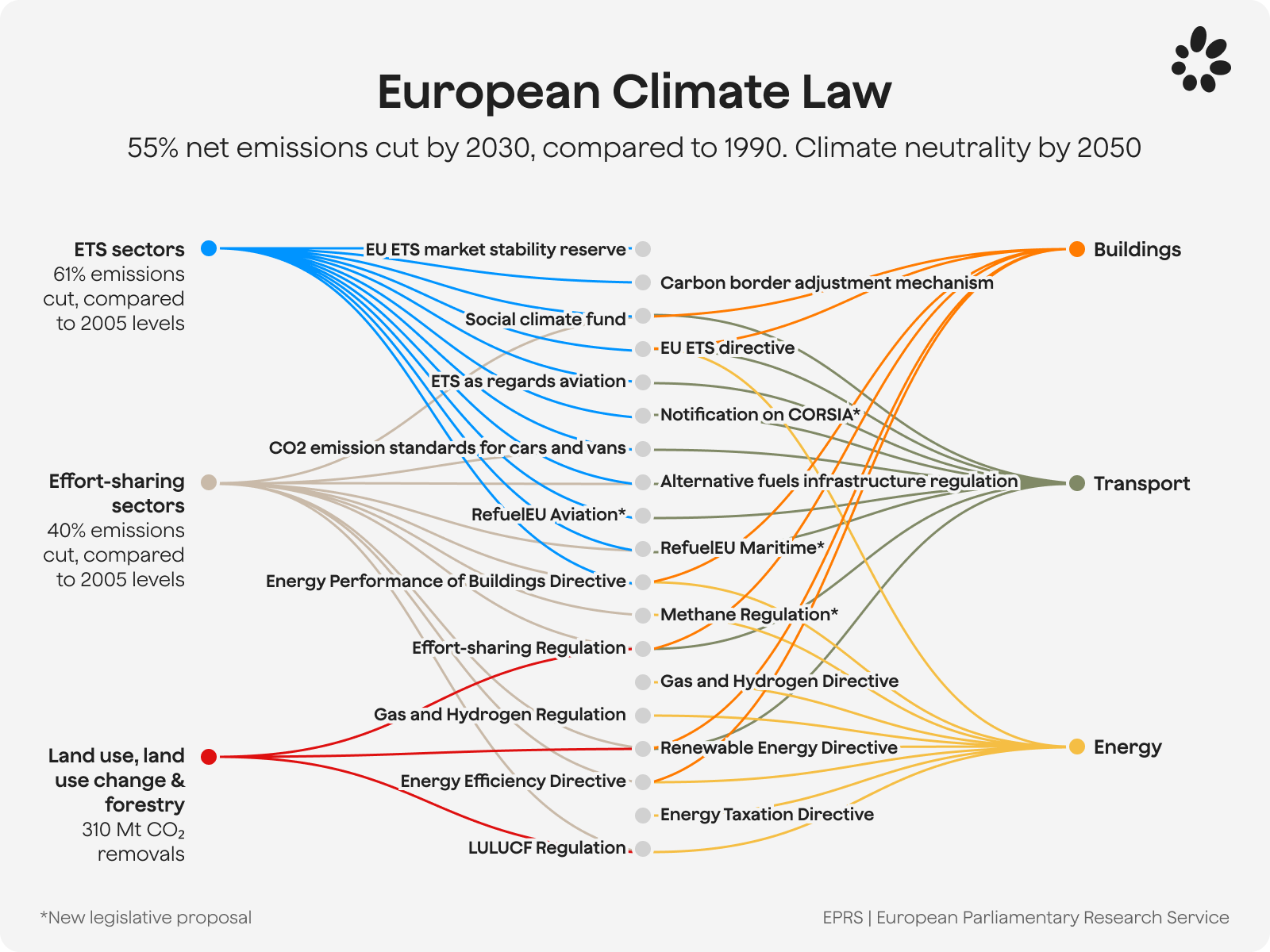What is Fit for 55?
The Fit for 55 package is a comprehensive set of legislative proposals aimed at aligning the European Union with its ambitious climate targets. It encompasses various policies and regulations designed to reduce greenhouse gas emissions and accelerate the transition to a sustainable, low-carbon economy.

What is the Fit for 55 timeline?
- Present: The Fit for 55 package was introduced in July 2021, signalling a significant step forward in the EU's climate ambitions. It includes numerous legislative proposals and initiatives, some of which are already in the process of being implemented.
- Near Future: Implementation of the Fit for 55 package will occur gradually over the next decade. The package outlines specific targets and milestones, including an overall goal of achieving at least a 55% reduction in greenhouse gas emissions by 2030 compared to 1990 levels. Many of the measures will come into effect in the coming years, impacting various sectors.
- 2030 and Beyond: The Fit for 55 package sets the stage for the EU's long-term objective of achieving climate neutrality by 2050. This means that emissions in the EU should be balanced by removals of greenhouse gases or offset through measures such as carbon capture and storage.
Sectors Covered by Fit for 55:
The Fit for 55 package covers a wide range of sectors and industries, aiming to ensure that emissions reduction efforts are comprehensive. Key sectors included are:
- Energy: Measures to accelerate the shift to renewable energy sources, enhance energy efficiency, and phase out high-emission technologies.
- Transport: Promoting electric vehicles, improving public transportation, and setting stricter emissions standards for cars and trucks.
- Industry: Implementing measures to reduce emissions from energy-intensive industries through carbon pricing and innovation.
- Agriculture: Promoting sustainable farming practices, reducing methane emissions, and encouraging afforestation.
- Buildings: Enhancing energy efficiency in buildings and promoting the use of sustainable construction materials.
Carbon Policy Tools
- Carbon Pricing: Expanding the EU Emissions Trading System (ETS) to include additional sectors, such as aviation and shipping, and increasing the price of carbon allowances.
- Carbon Border Adjustment Mechanism (CBAM): Introducing a mechanism to address carbon leakage by imposing tariffs on imports from countries with weaker climate regulations.
How Fit for 55 Affects Your Company:
For a company just beginning its decarbonisation journey, the Fit for 55 package is significant because it sets the regulatory landscape for emissions reduction in the EU.
Here are key considerations:
- Compliance: Understanding and complying with the new regulations will be essential. Companies need to assess how their operations and emissions align with the targets and requirements set by the Fit for 55 package.
- Innovation and Investment: The package encourages innovation and investment in low-GHG impact technologies and practices. Companies can explore opportunities to transition to cleaner energy sources, improve energy efficiency, and adopt sustainable practices.
- Risk Management: Being aware of the potential financial risks associated with non-compliance or carbon pricing is crucial. Companies should develop strategies to manage and mitigate these risks.
- Market Opportunities: The transition to a low-carbon economy also presents market opportunities, such as the demand for sustainable products and services. Companies can position themselves to benefit from these trends.
.svg)
